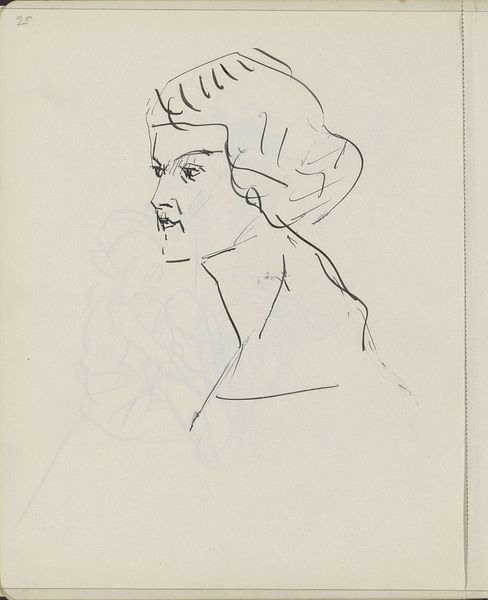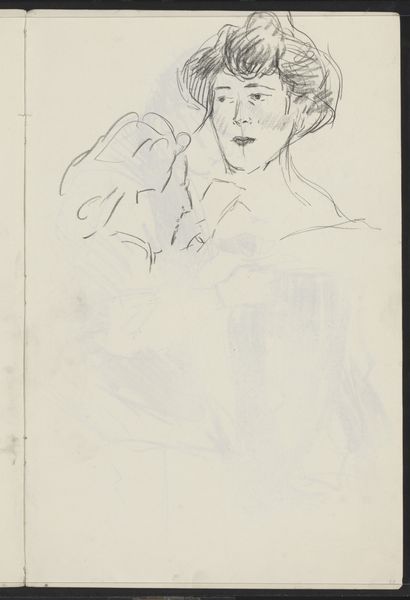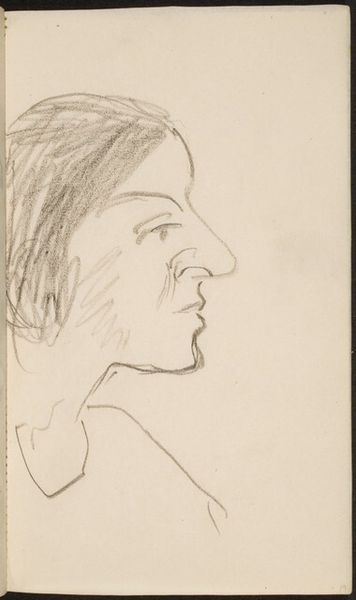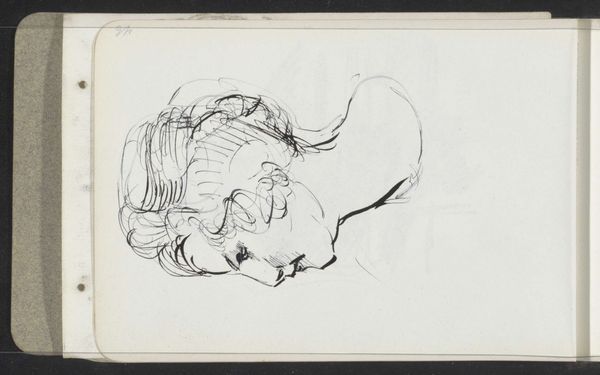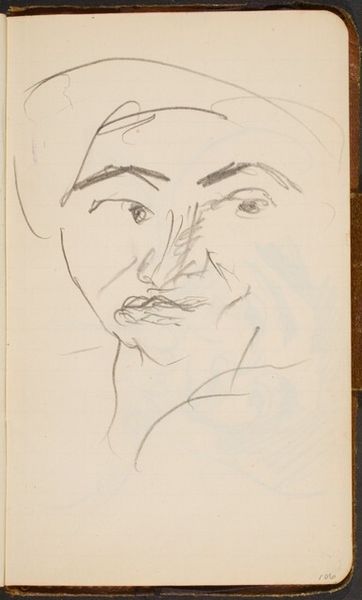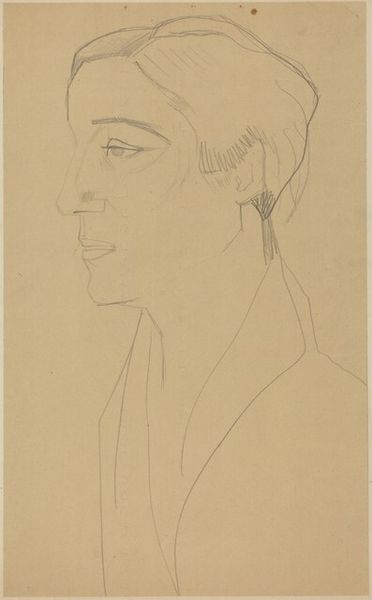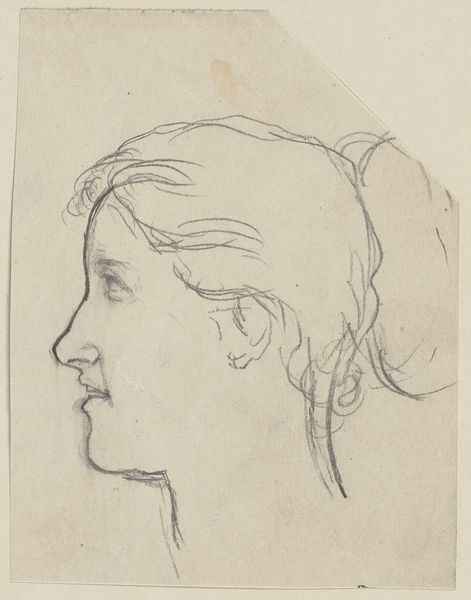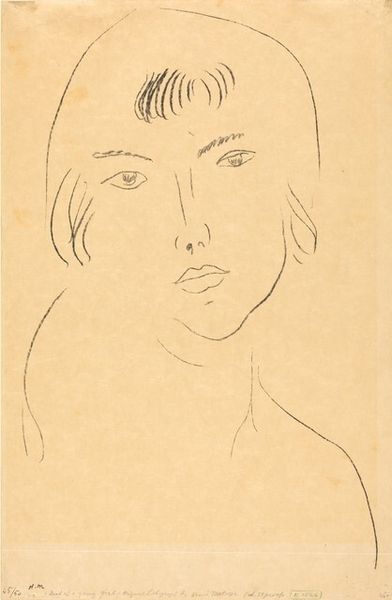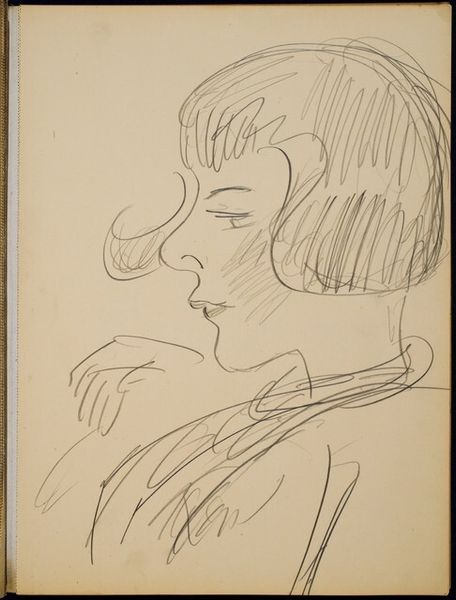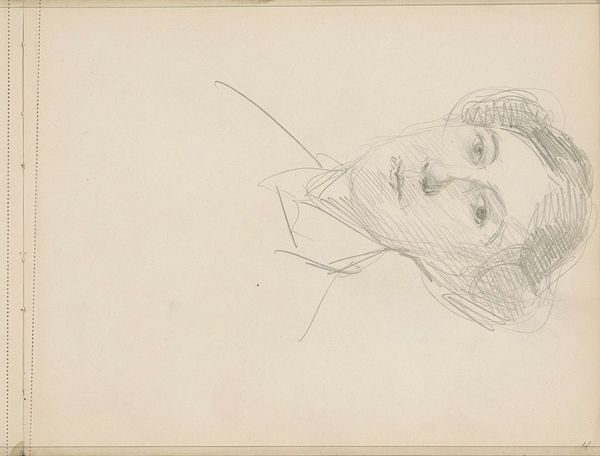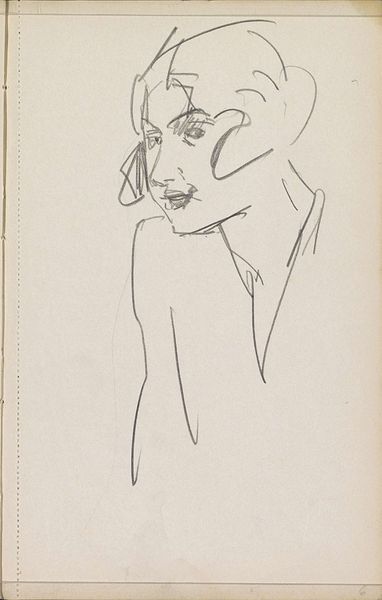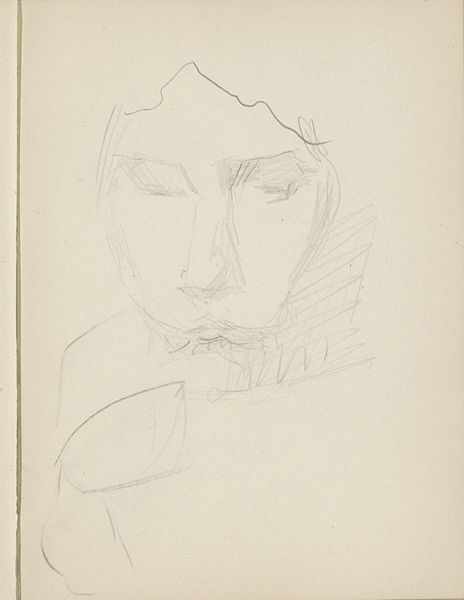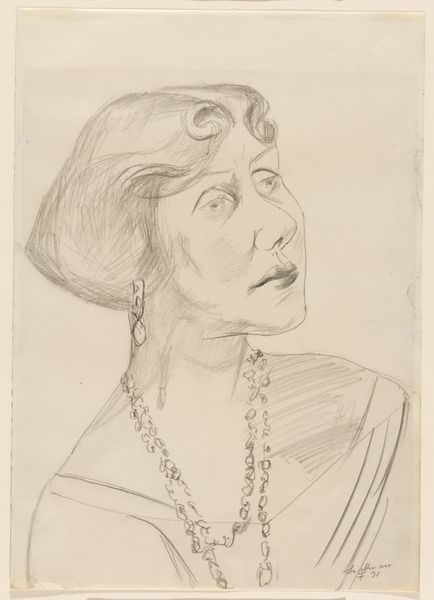
Copyright: Rijks Museum: Open Domain
Curator: What strikes me immediately is the light, almost fleeting quality of this portrait. It's just a whisper of a woman, really. Editor: Indeed. This drawing, "Vrouwenhoofd," or "Head of a Woman," comes to us from Isaac Israels. Its creation dates somewhere between 1886 and 1903. Crafted with pencil, it’s currently held at the Rijksmuseum. Curator: Israels captures her likeness with such immediacy! You can almost feel the energy of his hand moving across the page. And her gaze...it's so direct, almost challenging. Editor: Let's consider Israels' context, though. He occupied a vibrant social circle, often depicting scenes from modern life in Amsterdam, including its female inhabitants. In that light, the directness of her gaze might be interpreted as an assertion of agency within those bustling urban environments. Curator: I get that, but something about the sketch-like quality resists easy interpretation. Is she working-class? Is she wealthy? Her expression seems so ambiguous. The portrait itself exists as a statement on both individual female presence, but moreover speaks of his capabilities with the chosen medium. Editor: The open-ended nature of the drawing is perhaps precisely the point. By refraining from providing concrete social markers, Israels allows the viewer to project their own assumptions and experiences onto the subject. Who is this woman? Our relationship with her depends largely on us. Curator: Right. It opens up a space for thinking about the representation of women during this period. Editor: It really does become about both presence and absence, doesn't it? And as the gaze meets mine, it makes me ponder, even, our expectations when we are faced with the female form within portraiture. What do we anticipate encountering? Does she need to fulfill specific roles? Curator: That's exactly it! What an elegant little challenge packed into what appears to be a fleeting sketch. It demands that we reconsider what we look for in these depictions. Editor: Exactly. This piece ends up leaving more of an imprint in the mind precisely because of that.
Comments
No comments
Be the first to comment and join the conversation on the ultimate creative platform.
